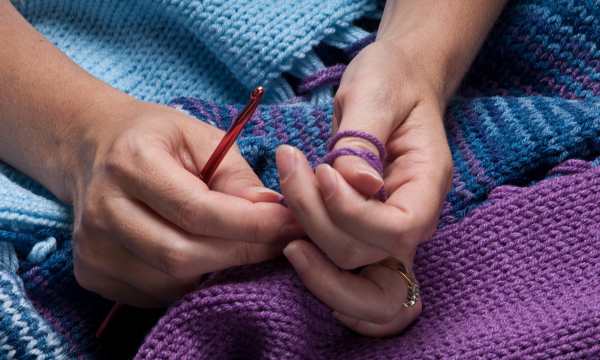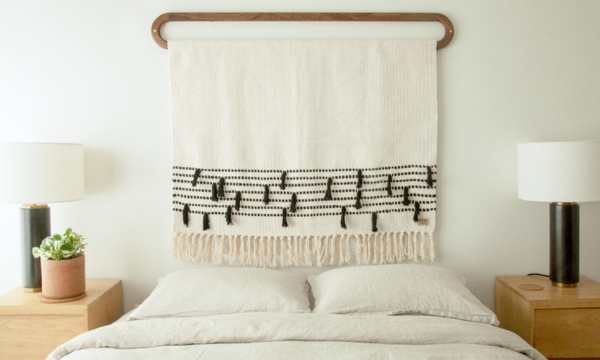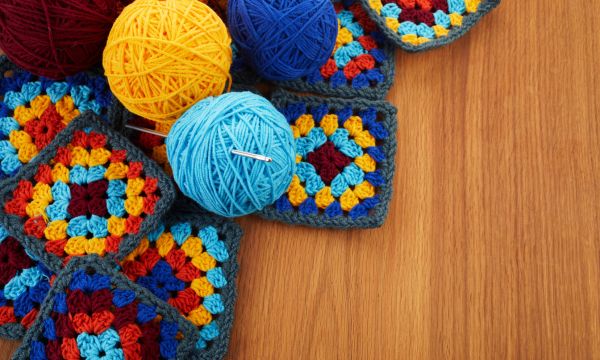Must-Have Tools for DIY Blanket Making
For some people, making your blanket (DIY) can be a rewarding and satisfying experience.
Ad
If you want to explore your creativity or are an experienced craftsman, having the right tools is crucial to the success of your project. In this guide, we explore the essential tools for DIY blanket making, so you can create a cozy and personalized blanket that reflects your style and warmth.
1. Fabric Scissors:
Good fabric scissors are one of the most important things you need for any DIY blanket project. To ensure a clean cut, choose a knife that is easy to hold and has a sharp blade. Fabric scissors are used to cut different types of materials, so you’ll need them to cut the blanket fabric of your choice without fraying or making the edges uneven.
Ad
2. Cutting Mat and Rotary Cutter:
A cutting mat is a protective surface that holds your work area in place and facilitates precise cutting. When used with a rotary cutter, fabrics can be cut more easily and quickly, especially when working with larger fabrics. Rotary cutters are available in different blade sizes, making them useful for a variety of DIY projects. Together they make blanket cutting easier and more accurate.
3. Measuring Instruments:
To ensure your blanket turns out exactly how you want it, you’ll need to take accurate measurements. Invest in a good measuring tape and a ruler that is clear and easy to read. These tools allow you to accurately measure and cut the fabric, ensuring the blanket will fit properly when you put it together. If you measure correctly from the start, you won’t have to worry about making mistakes later on with your DIY projects.
Ad
4. Pins and Pin Pads
It is important to pin the fabrics together so that they stay in place while sewing. Spend the money on good quality straight pins to keep the layers of fabric securely together. Pin mats keep your Pins organized and easy to find so they don’t get lost or scattered. This small but important tool ensures that everything stays on track while sewing and prevents mistakes from occurring.
5. One Sewing Machine:
While you can sew the blanket by hand, using a sewing machine will make the job go faster and look more professional. No matter how much experience you have as a seamstress, choose a sewing machine that suits your needs. Make sure it has the features you need to make a blanket, such as adjusting stitch length and width. You’ll need a reliable sewing machine to sew the fabric together and create a beautiful and functional blanket.
6. Needle and Thread:
Choosing the right thread and needle is very important for the longevity and appearance of your blanket. Choose a good thread that matches the fabric of your choice and that you can use for machine sewing. If you have several needles on hand, you can use different thicknesses of fabric. To make the sewing process go smoothly, make sure you use the correct needle for your machine and fabric.
7. Iron and Steel Plates:
A well-pressed fabric is necessary to produce a blanket that appears to be the work of a professional. To smooth out wrinkles, fix seams, and ensure a neat, shiny finish, you’ll need an iron and an ironing board. Ironing the fabric regularly throughout the project will improve the overall quality of your DIY blanket.
8. Markers or Chalk for Fabric:
Marking your fabric pieces before sewing is a good way to ensure they are in the right place and aligned correctly. You can mark specific points or lines on the fabric without leaving permanent marks because fabric markers and chalk are temporary and washable. This tool is useful when working with patterns or complex designs.
9. Joint Ripper:
Mistakes can happen, and a seam ripper is your best tool for correcting them without damaging your fabric. This small, pointed tool is designed to gently remove seams, allowing you to quickly fix any sewing mistakes. A seam ripper is useful because it allows you to keep your project intact even if you encounter problems along the way.
10. Embroidery or Decorating Tools (optional):
You may want to purchase embroidery tools or embellishments to give your blanket a more personal touch. You can use embroidery thread, needles, and embroidery hoops to create intricate patterns or monograms on your blanket. Adding beads, sequins or patches will make it look even better. You don’t have to use these tools, but they can help you express your creativity and make your DIY blanket truly unique.
conclusion
Having the right tools is important to make your blanket and have fun making it. From precise cutting to safe sewing, every tool is important in realizing your creative vision. No matter how much experience you have, this list of essential tools will help you create comfortable, personalized blankets that are both functional and beautiful. So grab your tools, choose your favorite fabric, and start making your blanket. It should be fun!
FAQs
1. Can I use regular scissors instead of fabric scissors to cut blanket fabric?
Regular scissors can be used, but fabric scissors are better for making cleaner, more precise cuts. Fabric scissors are used to cut different types of fabrics without fraying or leaving uneven edges, so the result looks professional.
2. Can I use scissors instead of a cutting mat and a rotary blade to cut fabric?
You can use scissors, but a cutting mat and rotary cutter are more accurate and faster, especially when working with larger fabrics. You can use them for smoother and safer cutting.
3. Can I sew the blanket by hand instead of with a sewing machine?
Although you can sew the blanket by hand, using a sewing machine is faster and looks more professional. Sewing machines make work faster and offer you more stitch options for different types of fabrics.
4. What yarn should I use to make my blanket?
Choose a good thread that matches the fabric of your choice and that you can use for machine sewing. Make sure the thread is strong and durable so that it can withstand the normal wear and tear of the blanket.
5. How do I choose the best needle for my machine?
Consult your sewing machine manual to find out which needle is best. Choose the needle according to the thickness of the fabric and make sure it works with the sewing machine to avoid problems while sewing.
6. Do I need an iron and a board to make a blanket?
Yes, for that elegant and professional look, you need an iron and an ironing board. Pressing the fabric as you work on your project can smooth out wrinkles, secure seams, and improve the overall quality of your DIY blanket.
 Mastering Blanket Stitch: A Guide for DIY Enthusiasts
Mastering Blanket Stitch: A Guide for DIY Enthusiasts
Blanket stitch is a decorative and useful embroidery method that has been used for hundreds of years […]
More DIY Blanket Wall Hanging Ideas
DIY Blanket Wall Hanging Ideas
Hanging a blanket on the wall is a fun and cozy way to make your living space […]
More Fun DIY Blanket Projects for Kids
Fun DIY Blanket Projects for Kids
With a blanket-making project, you can keep your kids busy with something fun and creative. Ad Not […]
More